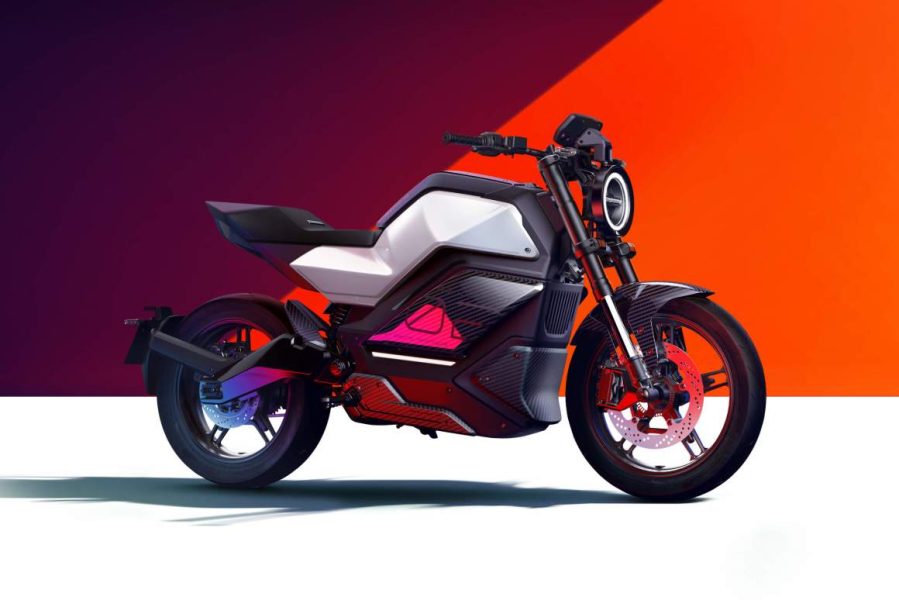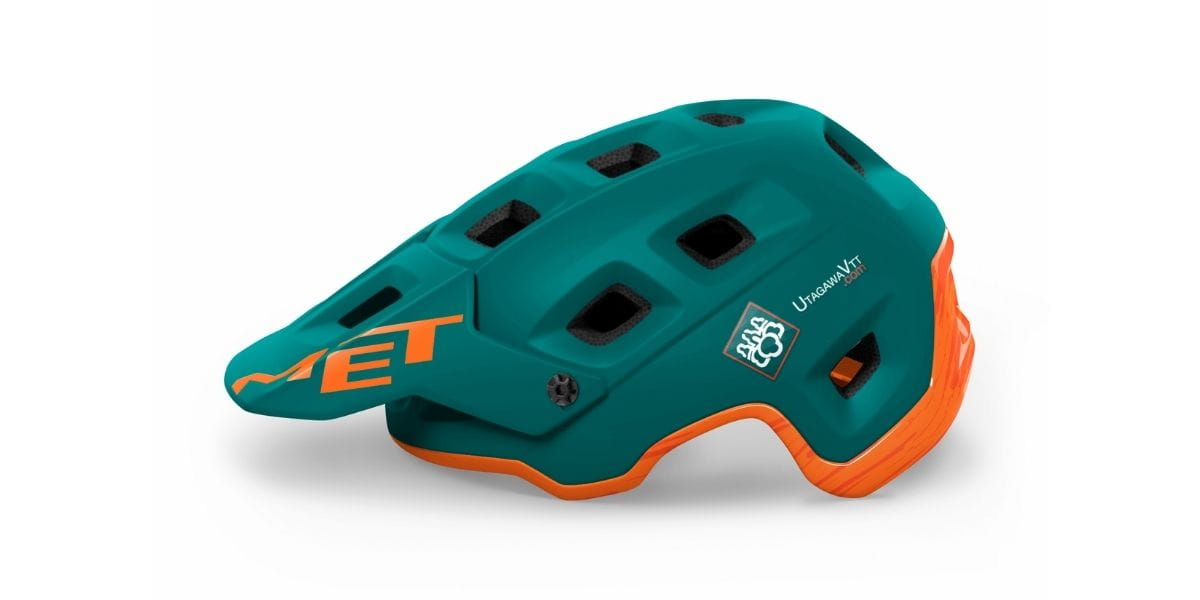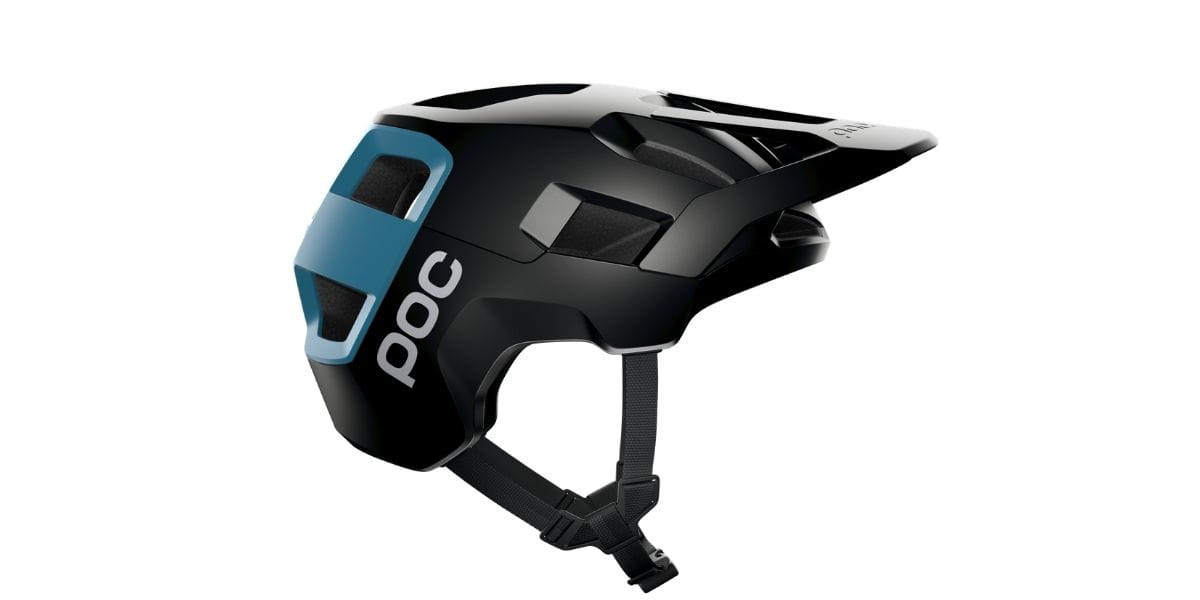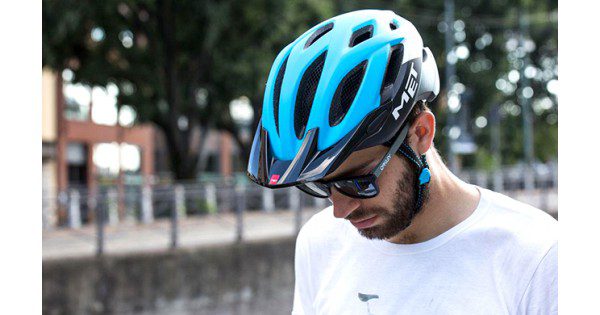
How to choose a mountain bike helmet without taking the lead?
Content
The helmet is perhaps the most important piece of mountain biking equipment. It keeps the cyclist safe and protects the head in the event of a fall or accident. You also probably know this person, whose life was saved by the helmet ...
These kinds of anecdotes are enough to remind you that, firstly, no, this happens not only to others, and secondly, we do not play with these things! Because in your head ... your brain. No need to discuss its usefulness for a long time, uh ...
Your helmet protects you from two things: an intrusion by an external object that can pierce the shell, and a concussion caused by your brain hitting the walls of your skull.
There are other elements to consider when choosing a helmet that best suits your physique and your practice.
We will tell you all this for you in this article!
What are the criteria for choosing a mountain bike helmet?
Design materials
Your helmet has two parts:
- La outer shellthat protects your skull from any external objects. Avoid PVC sheaths. Less expensive, this material is also less durable as it cannot withstand sunlight. Therefore, choose helmets made of polycarbonate, carbon or composite materials, which have the advantage of being lightweight and absorb more energy in the event of an impact. Your helmet will deform more than a PVC helmet, which will slow down the tensile strength. And therefore, it will protect your skull more effectively.
- La inner shellwhich protects your brain from concussions. Its role is to absorb and scatter the shock wave. All inner shells are made of expanded polystyrene. Entry-level helmets have a one-piece inner shell. More advanced models consist of a polystyrene structure bonded with nylon or Kevlar elements. At stake? Increased protection and, above all, lightness that you will appreciate.
For most models, the two casings are heat-sealed to combine strength, lightness and ventilation.
However, avoid models in which the two parts are simply glued together. While this type of finish is more economical, it usually results in more weight and less ventilation efficiency. It is clear that you sweat from your head quickly and, as a bonus, you will have neck pain.
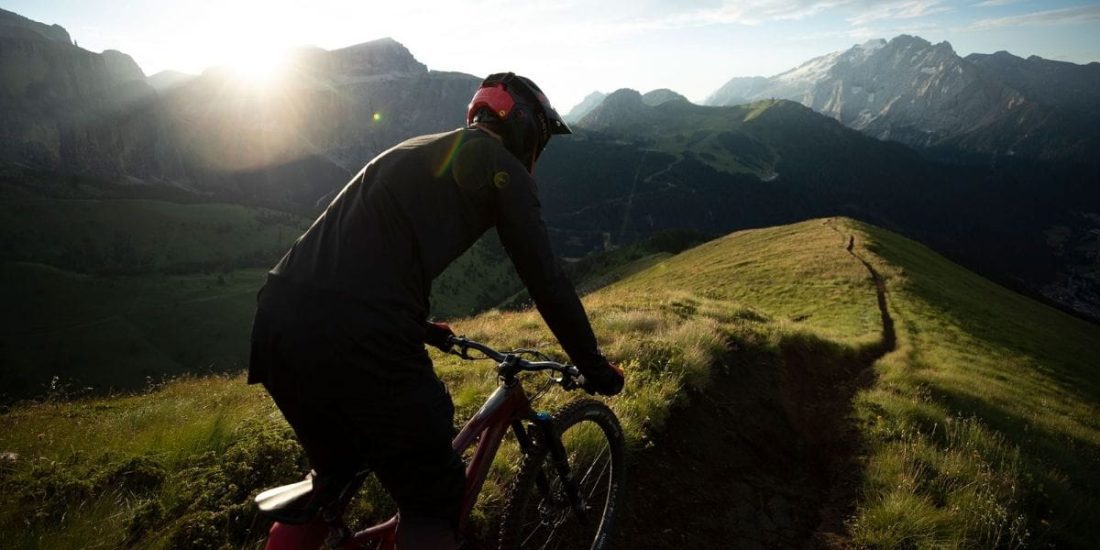
Protection technology
As far as patent security is concerned, you have 2 levels.
Minimum: CE standard
This is what provides effective protection for all helmets.
- Bicycle helmet: EN 1078 standard
- Race approved helmet: NTA 8776 standard
A speedbike is a VAE that is similar to a moped that is not limited to 26 km/h and must have a license plate (among other things).
The advantage of complying with the NTA 8776 standard is that this standard guarantees 43% more energy dissipation during an impact compared to a helmet complying with the EN 1078 standard.
For manufacturers, the first priority has long been the strength of the helmet and therefore the outer shell to avoid any risk of skull fracture. Today, efforts are focused on what happens inside the skull in the event of an impact and on protecting your brain. Thus, manufacturers have developed sophisticated technologies to limit risks depending on the direction and strength of the blows.
Be wary of products purchased from market platforms outside the EU, where it is difficult to know if minimum standards are met. We'll also warn you about counterfeit products ... it's up to you if you want to play with the safety of your head 😏.
Improvements in addition to the CE standard
Therefore, in addition to the CE standard, brands offer other safety patents, including:
- le MIPS system (multidirectional protection system). An intermediate layer is added between the head and the outer shell. It moves independently to protect your head from multidirectional impacts. It is now a system used by many brands such as Met, Fox or POC.
- The authorORV (omnidirectional suspension), characteristic of the 6D brand, which features 2 layers of expanded polystyrene (EPS), between which small shock absorbers are added to maximize the absorption capacity of the helmet.
- Koroydused inter alia by Endura and Smith, which replaces EPS with a design consisting of small tubes that break more than 80% of their length. Lighter and more breathable than EPS, Koroyd reduces kinetic energy by up to 50%. It protects your skull from light blows as well as strong blows.
This is an incomplete overview of other protection technologies that you can find on the market today. Be aware that manufacturers are increasing their research in this area, constantly evolving to offer us the best possible protection.
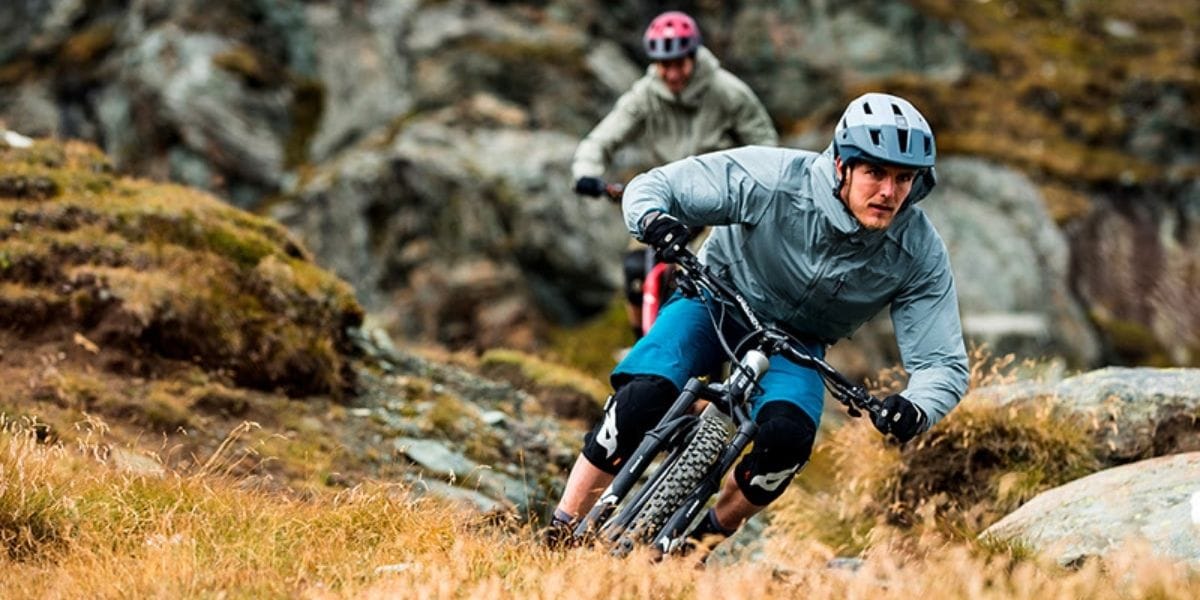
A blanket
Coating is a very important point, especially in terms of the level of protection of the temples and the back of the head. The helmet shell must be low enough to protect these areas. You will also make sure that the projectile does not hit your neck when you raise your head.
Comfort
The comfort of your helmet is based on 2 elements:
- le mousses removable inside the helmet, which not only provides comfort but also absorbs moisture. Several brands are antibacterial and breathable, one of which is Coolmax.
- le air intakeswhich promote ventilation and airflow from front to back to cool the head. Some helmets also have insect screens to prevent bites.
Setting
Le horizontal adjustmentat the back of the head provides good support for the helmet. High quality models offer vertical adjustmentto adapt the helmet to your morphology. Know that if you have long hair this is a great addition to transfer your ponytail easily!
There are 3 ways to adjust the helmet:
- the dial that you turn to pull your head up;
- micrometric buckle that works like a dial, but with greater precision;
- BOA system®that works through a live cable. It is the most reliable system on the market today.
La chin strap just keeps the helmet on his head.
There are 4 attachment systems:
- simple clamp;
- micrometric tightening, a little more accurate;
- magnetic Fid-Lock buckle®, even more precisely;
- double D-buckle buckle which is found mainly on Enduro and DH helmets. While this is the most reliable retention system, it is also the least intuitive and therefore takes little time to adapt to get started.
. side straps to ensure that the helmet is serviced in the event of severe impacts or falls. They cross just below the ears. Most are slip-adjustable. Top-of-the-line models offer a lock that is once again more secure and accurate.
Compatible with glasses / goggles
The helmet shell must have sufficient space with the skull at the temporal level to avoid discomfort when wearing glasses 😎.
Make sure the visor of the helmet is adjustable enough to keep your goggles lower or higher when not in use.
Likewise, do not forget to make sure that the front protection of the helmet does not press on the top of the goggles or the mask: it is quite frustrating to spend on a walk while lifting the goggles, which tend to go down on the nose.
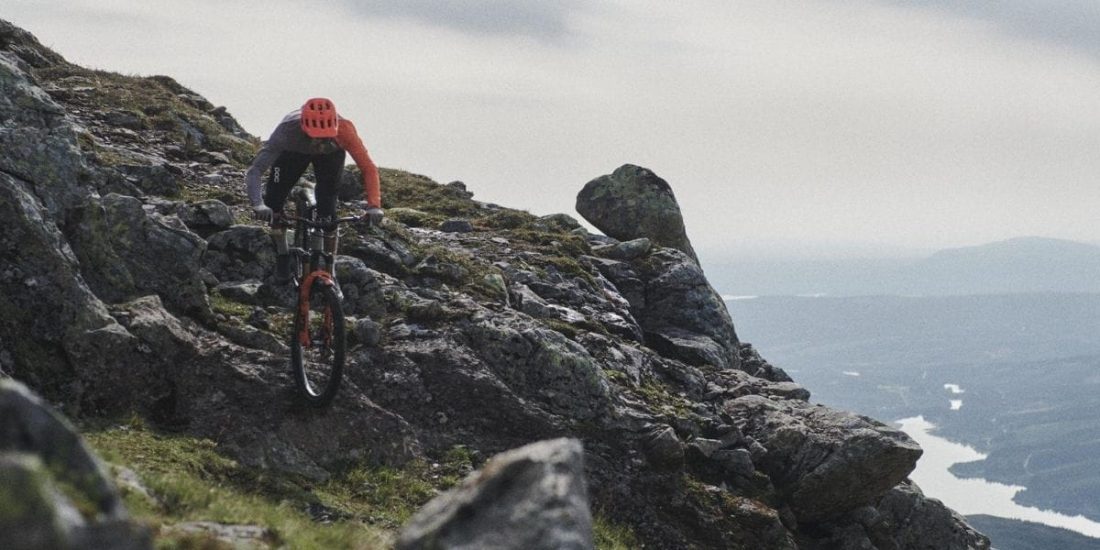
Optional Accessories
Manufacturers are not missing out on opportunities to innovate to stand out beyond the basic criteria and the sheer protection that a helmet provides.
Therefore, we find devices for:
- Fall detection and emergency call like Specialized Angi.
- NFC Medical ID: A chip inserted into the headset stores your vital medical information and emergency contact information, so first responders have direct access to the information they need.
- Help emergency services find you quickly and easily if something goes wrong with the RECCO® Reflector (a well-known avalanche detection system in the mountains).
- Rear lighting so that it can be seen at night (not very useful in MTB mode because we prefer other lighting systems at night).
- Audio connection: to hear GPS navigation instructions (and take phone calls hands-free, but hey ...) while listening to the world around you.
Aesthetics
In our opinion, this is the last of the criteria 🌸, but not least. You need to like the helmet so that the colors, finishes and overall design match your taste, so that it matches your workout, your bike, your gear.
Don't be fooled by this criterion, however, a good helmet does not necessarily mean a helmet that protects well.
Be careful with the dark helmet, it gets hot in summer when the sun falls ♨️!
Now that you know the important criteria for choosing a helmet, consider using mountain bike goggles to protect your eyes.
Which helmet should I choose according to my practice?
I just need an MTB helmet
Le classic helmet we recommend. This is a great compromise between protection, ventilation and weight. Suitable for recreational mountain biking, cross-country skiing.
A typical French Cairn PRISM XTR II helmet with a very good value for money, with a detachable visor that leaves the perfect place to ride at night with a headlamp and large vents in the back.
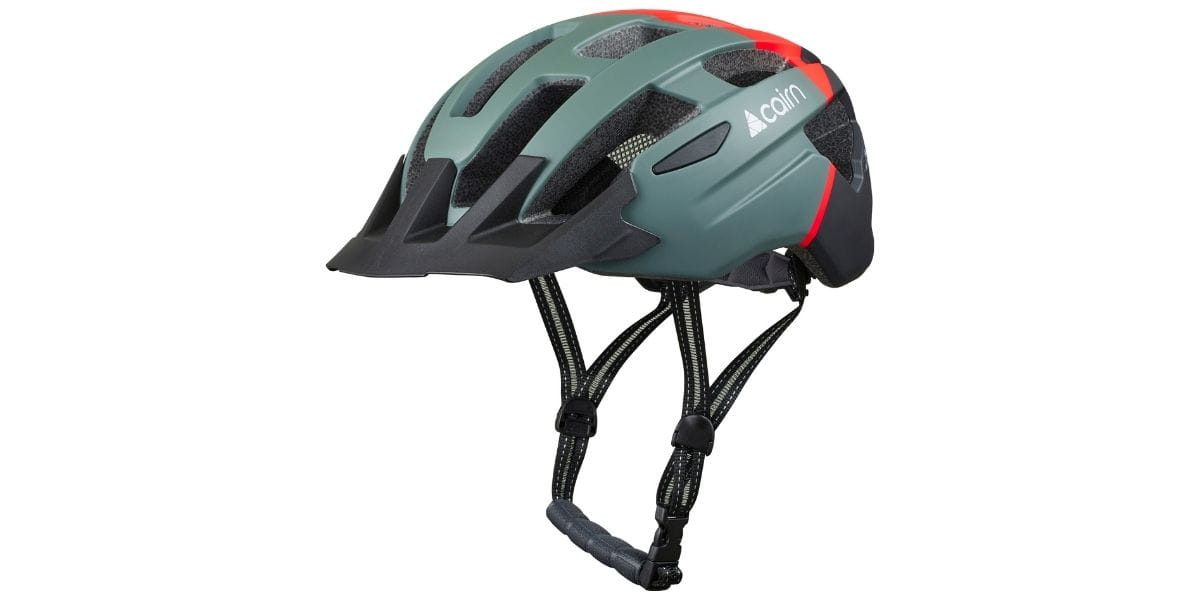
I race and want to go fast ✈️
Choose aero helmetdesigned to allow air to pass through and save precious seconds. It can also be used as a road bike.
recommendations:
- Artex tour
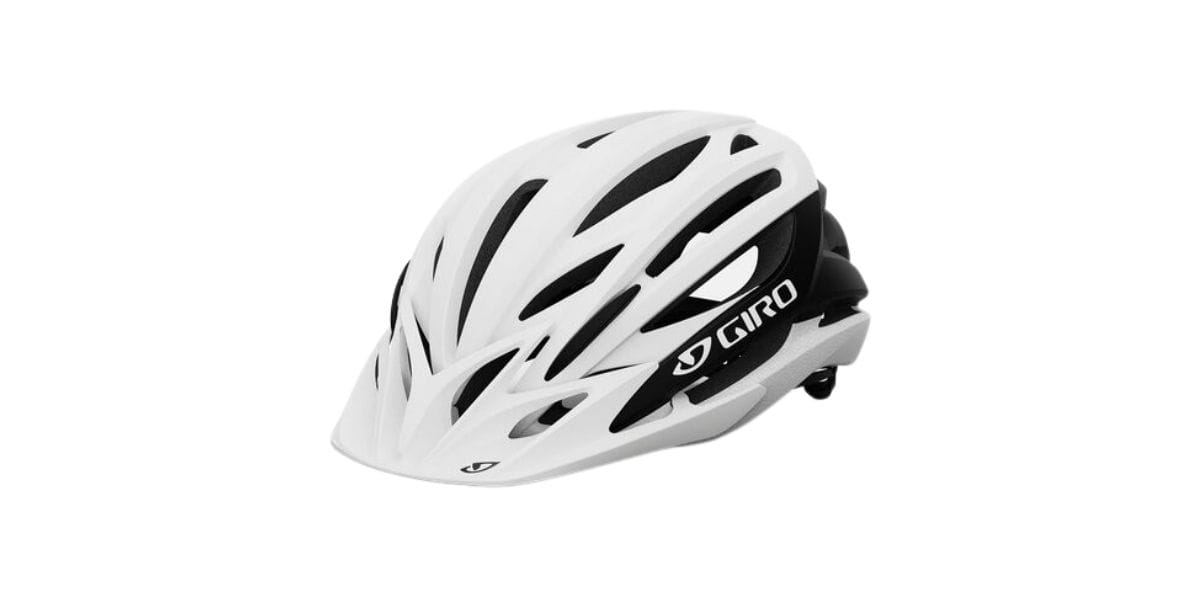
- ECOI ELIO MAGNETIC

I went hiking and I want to feel protected
Choose a bike helmet with a low slope down to the back of your head.
Suitable for off-road, all-mountain.
recommendations:
MET Newfoundland

(don't ask us where to find the Terranova version for UtagawaVTT, it's not there ... MET made us an ultra-limited edition for site staff only)
POC Kortal

I want maximum protection / do DH or enduro
Here we go to full helmet, Of course. Your entire head is protected, including your face, especially with an eye mask. It is particularly durable and absorbs maximum energy.
Suitable for enduro, DH, freeride.
All brands may offer one or two models. Troy Lee Designs remains the premium specialist in this genre, recognized by practitioners.

With a full face helmet for eye protection, it is better to wear a mountain bike mask than safety glasses. It is more convenient because the headband is worn over the helmet (instead of the headband of the glasses being pressed against the skull by the foam of the helmet). We will help you choose the perfect MTB mask.
Sometimes I run cross country, sometimes enduro. In short, I want a universal helmet.
The manufacturers have thought of you. Increasingly used helmet with removable chin bar offers the best compromise for versatile practice. The detachable helmet is a combination of a jet helmet and a full face helmet. It provides comfort and good ventilation on the ascent, as well as maximum protection on the descent.
Suitable for all mountain, enduro.
recommendation:
- Parachute

Legislation: what does the law say about bicycle helmets?
Admittedly, a helmet is not a must for an adult, but it is highly recommended and you know why.
Since 2017, the law introduces any child under 12 years old 👦 Wear a helmet, whether on your own bike, on a seat, or in a trailer.
How long does a mountain bike helmet last?
It is recommended to change the helmet every 3-5 years, depending on the use. You can also check to see if the styrofoam has hardened during drying. To do this, we lightly press on the material with our finger: if it is flexible and easily leaves no problems, on the other hand, if it is hard and dry, the helmet must be changed.
You can find out the age of your helmet: just look inside the helmet (often under the comfortable foam), the production date is indicated.
It goes without saying that in the event of an impact or if the helmet has played a role (broken, cracked, damaged helmet), it must be replaced.
How do I store my bike helmet?
To ensure that it retains all its properties for as long as possible, store it in a place where it does not risk falling, which protects it from temperature extremes, in a dry place and is not exposed to UV ☀️.
What is the maintenance of his helmet?
The helmet can be washed perfectly. Prefer a soft sponge and soapy water, detergents and other chemicals should be avoided to avoid damaging it. To dry, simply wipe the cloth with a lint-free cloth and let it air out for a few hours. The removable foam can be machine washed at a maximum temperature of 30 ° C on a delicate program. (Do not dry the foam!)
📸 Credits: MET, POC, Cairn, EKOI, Giro, FOX
